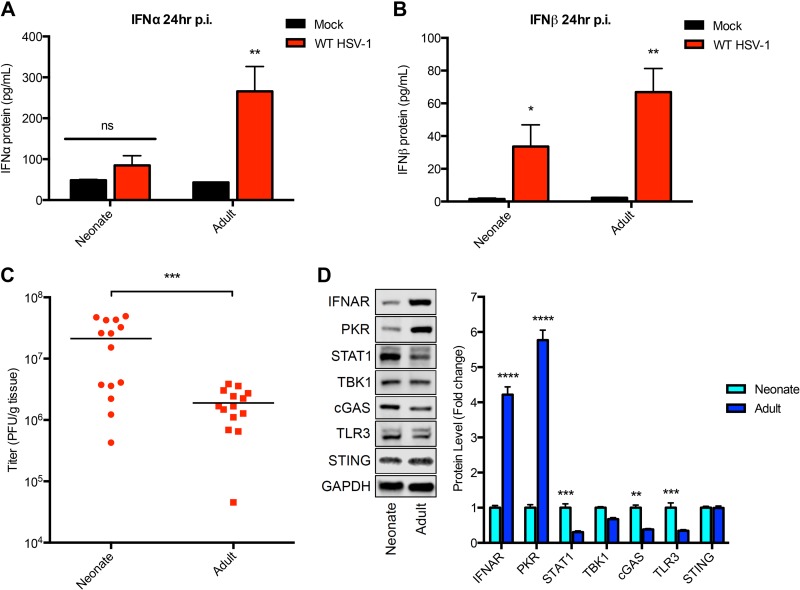FIG 2 .
Reduced type I interferon production following HSV-1 infection, and IFN-α/β receptor (IFNAR) levels in the newborn murine brain compared to the levels in the adult brain. (A) Results of IFN-α ELISA of newborn and adult mouse brain homogenates either 24 h p.i. with 106 PFU HSV-1 (n = 5, each age group) or 24 h after mock infection (n = 5, each age group). There was no statistically significant increase in IFN-α in the HSV-infected newborn brain compared to the level in the mock-infected control (P = 0.16). The HSV-infected adult brain had significantly increased IFN-α production compared to the level in the mock-infected adult brain at 24 h p.i. (P = 0.006). (B) IFN-β ELISA of brain homogenates either 24 h p.i. with 106 PFU HSV-1 (n = 5, each age group) or 24 h after mock infection (n = 5, each age group). There was a statistically significant increase in IFN-β production following HSV-1 infection compared to its production in mock-infected controls in both the newborn (P = 0.04) and adult (P = 0.002) mouse brain. (C) HSV-1 titers in the brain at 24 h following i.c. inoculation with 106 PFU virus. HSV-1 replication was significantly higher in the newborn brain than in the adult brain (mean titers of 2.12E7 PFU/g for the newborn and 1.90E6 PFU/g for the adult; P = 0.0008). (D) Representative immunoblots (left) and densitometry results (right) of brain homogenates from uninfected newborn and adult mice (n = 5 in each group). Protein levels of IFNAR and PKR were significantly lower in the newborn than in the adult brain. Basal levels of STAT1, cGAS, and TLR3 were higher in the newborn than in the adult brain. TBK1 and STING levels were similar in both age groups. *, P < 0.05; **, P < 0.01; ***, P < 0.001; ****, P < 0.001.

